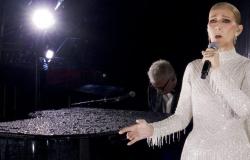Canon unveils a new telephoto lens for professional sports photographers. With the Canon RF 100-300mm f/2.8L IS USMthe brand aims to reconcile the zoom flexibility with the image quality of a fixed focal length long range. All in one template relatively compact given its focal length. Back to its characteristics.
Versatile 100-300mm focal range
This new Canon lens continues the long line of telephoto lenses 300mm f/2.8 – the oldest having been launched in 1974. However, the manufacturer stands out by transforming it… into telezoom.
By adding a focal 100mm (and all the “intermediate” focal lengths), we gain considerably in versatility. Which, at the edge of the field, can be very practical. Canon’s goal: to avoid have to change the lens when the subject approaches the photographer. A choice original, bold… and no doubt relevant.






However, the objective retains a luminous aperture– and constant – at f/2.8. A point that photographers of indoor sports (table tennis, handball, basketball, track cycling, fencing, etc.). This openness also creates a certain difference with the Canon RF 100-500mm f/4.5-7.1 L IS USM super-telephoto lens, much less bright (and even more at full zoom).


Also note that the Canon RF 100-300mm f/2.8L IS USM is compatible with teleconverters Canon Extender RF 1.4x and 2xoffering a focal length equivalent 140-420mm f/4 Or 200-600mm f/5.6. The lens is also compatible with APS-C RF mount bodies. By mounting it on a Canon EOS R7, we obtain an equivalent 160-480mm. The maximum range reaches even 960mm by coupling it with the x2 teleconverter!


Finally, the size of this is also worth noting. Compared to the Canon EF 300mm f/2.8 L IS II USM, it weighs only 190g moreand reached 2590g. On the other hand, count 7.5cm taller in length, for a total of 32.3cm. However, we appreciate that the zooming is done internally.


Note, however, that the 100-300 mm focal range is not (totally) new to Canon, the lens EF 100-300mm f/4.5-5.6 USM having been launched in 1990. However, its sliding opening is otherwise less bright, and reflects a much less professional orientation.
Here is the list of features of the Canon RF 100-300mm f/2.8 L IS USM:
- focal range : 100-300 mm (160-420 mm mm in APS-C)
- lens for sensor full frame
- max opening : f/2.8
- minimum aperture : f/22
- angle of view : 24° – 8° 15′
- optical construction : 23 elements in 18 groups (including one fluorite lens, 4 UD lenses and one GMo aspherical lens)
- diaphragm : circular, 9 slats
- minimum focus distance : 1.8m (constant)
- image stabilization : yes, up to 5.5 stops (6 with IBIS)
- tropicalization : water and dust resistant
- max magnification : 0.06x (at 100m); 0.16x (at 300mm)
- focus : Dual Nano USM AF motor
- filter diameter : 112mm
- dimensions : ø 128 x 323.4 mm (D x W)
- weight : 2590g
- supplied accessories : front and rear caps, sun visor, soft case
- mount compatible : Canon RF
A complex optical formula
Unsurprisingly, the Canon RF 100-300mm f/2.8 L IS USM adopts a particularly rich optical formulaand is based on 23 lensesdivided into 18 groups. The constant aperture at f/2.8 is ensured by a 9-blade circular diaphragm, guaranteeing a very aesthetic background blur. A point from which the photographers of portrait – and of sportobviously.


As such, note that the minimum focusing distance is only 1.8m. Focus limiter helps adjust focus from 1.8m to infinity And from 6 m to infinity.
Not stingy with technical details, Canon indicates that it has succeeded in housing the various optical elements in a barrel at the reasonable size thanks to low draft optics of the RF mount. “The lenses were able to be placed closer to the mount than with EF-mount super telephoto lenses, resulting in even higher image quality while reducing lens weight. “, details Canon.


The lens has 4 ED glass lensesAnd a fluorite lens, in order to correct chromatic aberrations. Moreover, a molded glass aspherical lens (PMo) comes in reinforcement to improve the quality of the image in the periphery. In addition, “the use of fluorite contributes to reducing the weight of the lens”, says Canon.
Finally, the telephoto lens relies on UPS home technology (Air Sphere Coating). Some lenses thus receive a lens treatment consisting of nanometric bubbles. The latter come to constitute “an additional layer to very low refractive index”intended to fight against parasitic reflections, the effects of flare and of ghosting.


Autofocus: two Nano USM motors, just that
For some optimal AF performance – even with very fast and/or randomly moving subjects – the Canon RF 100-300mm f/2.8 L IS USM is equipped with two Nano USM motors. A system that we had already encountered on the Canon RF 70-200mm f/2.8 L IS USM telephoto lens.
In addition, this 100-300 mm is equipped with a floating lens, which corrects the focus when the zoom is engaged. Thus, the goal is “almost” parfocal – a very abrupt zoom which can nevertheless lead to a shift in focus.
Finally, the objective must present a level of focus breathing particularly reduced. A point that should be of particular interest to videographers – as well as the silent operation of the Nano USM motorization.


Without forgetting the optical stabilizationwhich should offer a maximum gain of 5.5 stops – or even 6 stops using a sensor-stabilized box (IBIS).
Ergonomics: resolutely designed for sports photography professionals
The ergonomics of the Canon RF 100-300mm f/2.8 L IS USM seem to have been optimized to the maximum for facilitate the work of professionals at the edge of the field. As indicated above, the objective is relatively compact and light (given its focal range). Count 32.3cm longa maximum diameter of 128mm and a weight of 2590g.


The lens takes on the usual White paint L-series telephoto lenses, which are supposed to dissipate the heat generated by the sun’s rays more easily. In addition, it is resistant to water and dust thanks to many seals. Likewise, the fluorite-based lens mentioned above proves to be easier to clean.


There zoom ringparticularly wide, is assisted by the focusing ring, which is narrower, and by the usual control ring specific to RF mount lenses. It has at the front 2 configurable buttons (circled in red on the visual below), assigned by default to focusing blocking.


But it also incorporates – and above all – a additional button, placed at the very rear of the barrel, near the bayonet. Judiciously placed, it can be operated with the right hand. It thus serves the reminder of the point. A switch with positions “Preset” And “Recall” makes it easy to save and recall a precise distance – the position of a vehicle in a bend, for example.


Last ergonomic detail: unlike very long-range fixed focal lengths (400, 600 or 800 mm), this 100-300 mm does not have an insertable filter drawer system. Thus, the lens is equipped with a thread for circular filterswith a diameter of… 112mm.
Find below a selection of images captured with the Canon RF 100-300mm f/2.8 L IS USM (provided by the brand):






Canon RF 100-300mm f/2.8 L IS USM price and availability
The new telephoto lens Canon RF 100-300mm f/2.8L IS USM is available for pre-order at a price of €11,999. Deliveries should start from the end of May.
The sun visor (supplied in the box) is also available separately at the price of 629 €.
Our first review of the Canon RF 100-300mm f/2.8 L IS USM
Definitely designed for professionalsthe Canon RF 100-300mm f/2.8 L IS USM is surprising in more than one respect. On the one hand, its very original 100-300mm focal range transforms a “usual” 300mm f/2.8 into a far more versatile telephoto zoom.
Thanks to his constant and bright aperture at f/2.8it specifically targets photographers from indoor sports : kockey, handball, indoor cycling… or even sports where the players are at a relatively short distance from the photographer (tennis, for example).
A few months before the opening of Paris Olympic Games (and the Rugby World Cup), Canon has a extra trick up his sleeve. One tariff remains pupil… but which seems relatively in phase with the intended target.
























